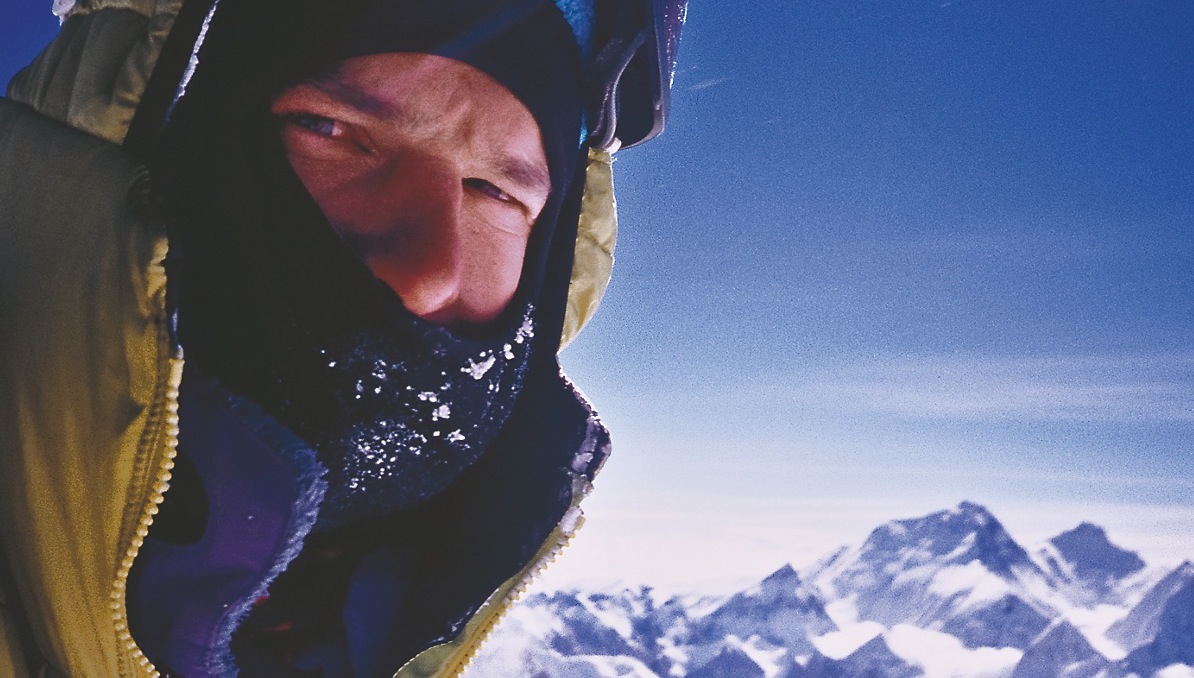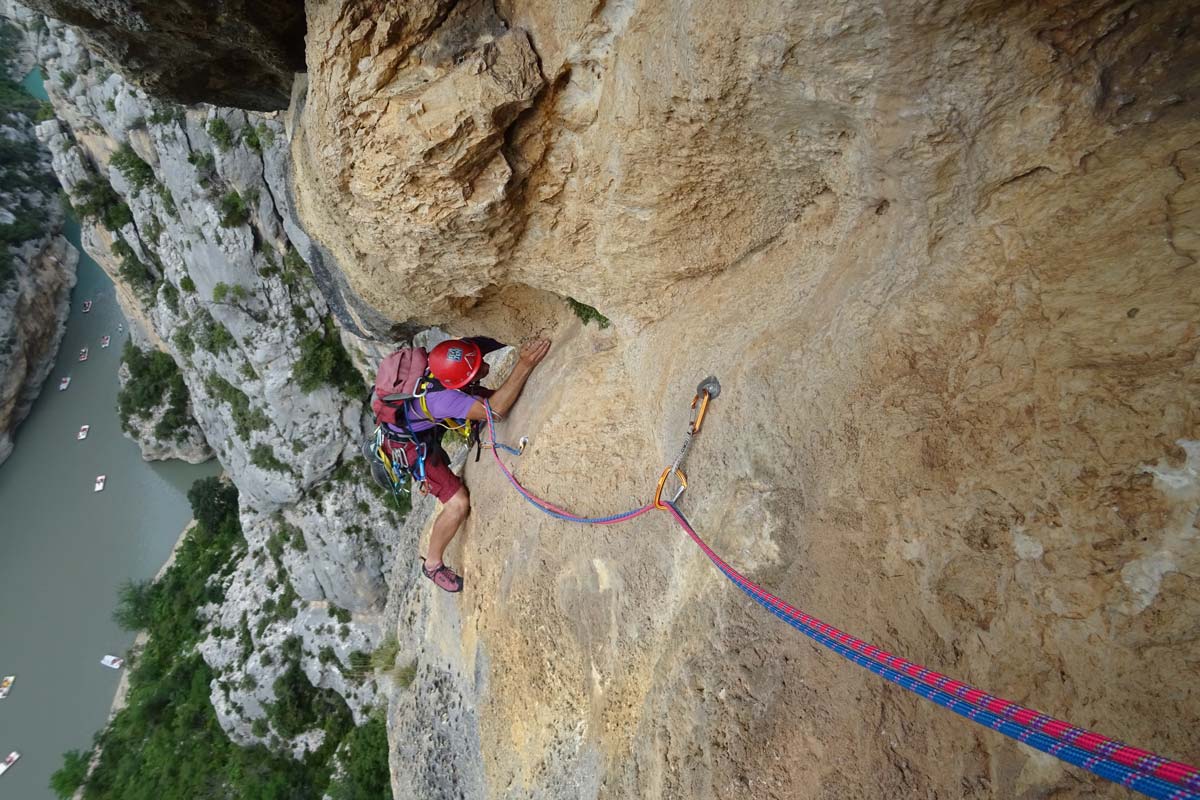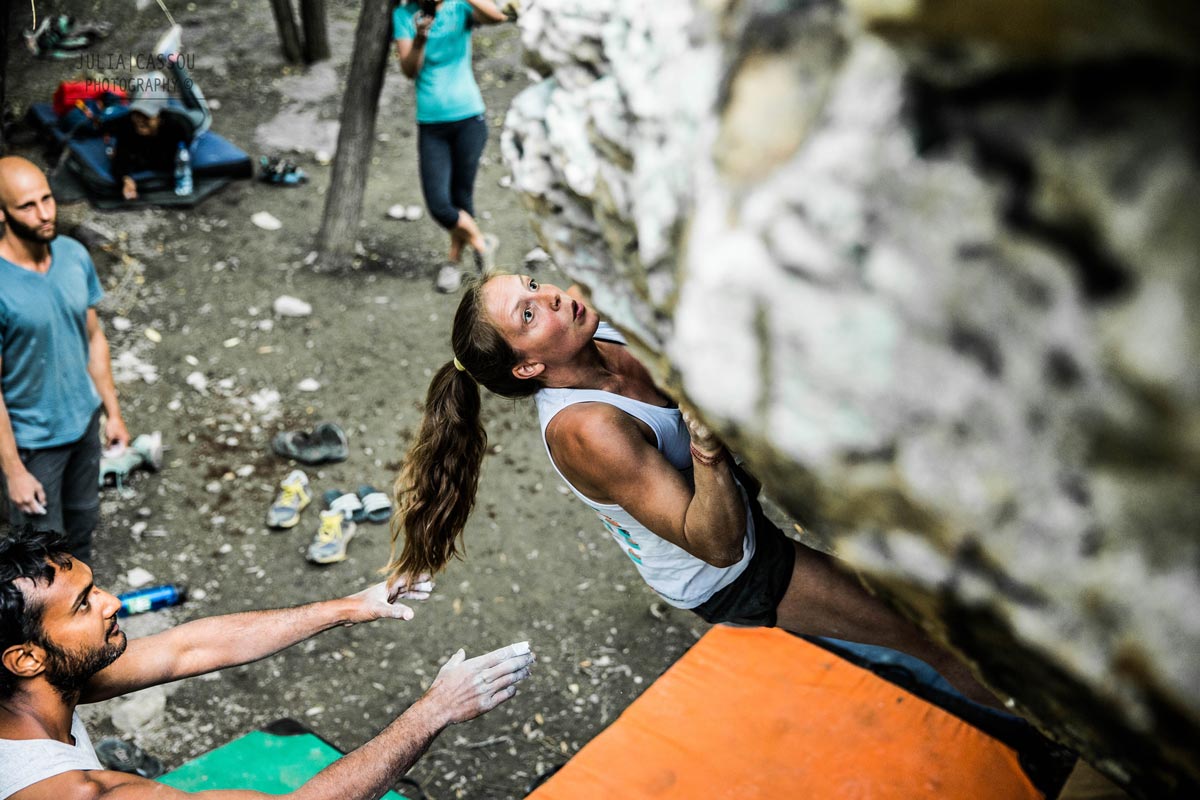On summit of Cho Oyu (Photo: Steve House for UIAA)
American climber and mountaineer Steve House who was awarded the UIAA Achievement Award at the 2014 General Assembly in Flagstaff, Arizona has climbed tough and punishing big walls on some very big mountains in far flung corners of the world.
They include what he considers his toughest climb yet, Nanga Parbat (8,125m) where he made the difficult first ascent up the Central Pillar of the Rupal Face of Nanga Parbat in 2005 with friend and fellow climber Vince Anderson.
The Anderson / House line is graded M5 X, 5.9, W14 and the face is 4,100 m tall.
Ask House what he likes about such big technical alpine-style challenges, and he replies: “I just love the complexity and the problem solving. I love the environment it takes place in, the partnerships and the relationships that come out of it. I even like the early morning, I like all of it.”
Nothing is for certain on a big wall or mountain and especially if it in a remote location, said House.
So many factors contribute towards the final outcome including the weather, food, access, your climbing partner, the altitude, the list goes on.
His climbing adventures across the globe, however, almost ended on Mount Temple near Lake Louise, Alberta in 2010 when, while climbing yet another new route with Bruce Miller, House lost a foothold and suddenly found himself airborne. After a 25 meter fall, he slammed against a wall which resulted in a pelvis broken in 20 places and numerous other internal injuries including a punctured lung.
It was a moment he was lucky enough to come out of alive, and as is the case at such times, resulted in a period of deep introspection.
That’s when House said he decided to found Alpine Mentors which helps aspiring alpinists prepare for tough and demanding big wall climbing over a two-year-programme.
UIAA president Frits Vrijlandt said Steve House is an inspiration to climbers around the world and an example of the best climbing and mountaineering offers.
“Not only is a renowned climber internationally, but House has gone one step further and climbed an even higher mountain with his dedication to teaching what he has learned to young aspiring alpinists.”
House describes himself today as an alpinist, speaker, mountain guide, author and coach. He tries to integrate all these different aspects together based on a philosophy of awareness and experience.
He’s written a well-received book called “Training for the New Alpinism: A Manual for the Climber as Athlete” which he believes has started an important new conversation about the need for a balanced life which takes stock of both the personal, spiritual and the physical quest.
House said climbing and mountaineering can at a steep price and at the expense of other things that matter including relationships, family and friendship.
“What is considered good climbing sometimes comes out of an unhealthy place,” said House.
The idea behind Alpine Mentors, a two-year-climbing resource, is about learning skills, but also about realizing that it’s not just strength but confidence, borne out from experience and wisdom, that is crucial to succeeding on difficult climbs.
“After my accident in Canada, I realized, it wasn’t more climbing I had done in my life but that I hadn’t done more for my climbing community, a community that has given me so much,” said House. “I created Alpine Mentors for that.”
House said Alpine Mentors is his main avenue for giving back, the ability to teach young alpinists that you can have a healthy relationship and enjoy climbing.
Mountains will always be dangerous, said House, but what’s important is to “know know when to be afraid and of what, when to be confident and why.”
“Mentorship is so important in big alpinism because it’s such a complex environment, it’s rock, ice, snow, glaciers, weather, altitude, even eating and drinking,” stressed House. “It’s not just hard skills we are trying to pass on, it’s a way of believing in your abilities.
This kind of approach to teaching young alpinists a positive way to climb, House explains is already prevalent in Europe through programs administered by federations such as the French Alpine Club (FFCAM) and the Slovenian Alpine Club (PZS) – but not widely taught in North America.
House is now working on a regional mentorship programme in Washington State with the backing of the American Alpine Club.
Please click here to read the news release.
Alpine Mentors from Wayfaring Media on Vimeo.



